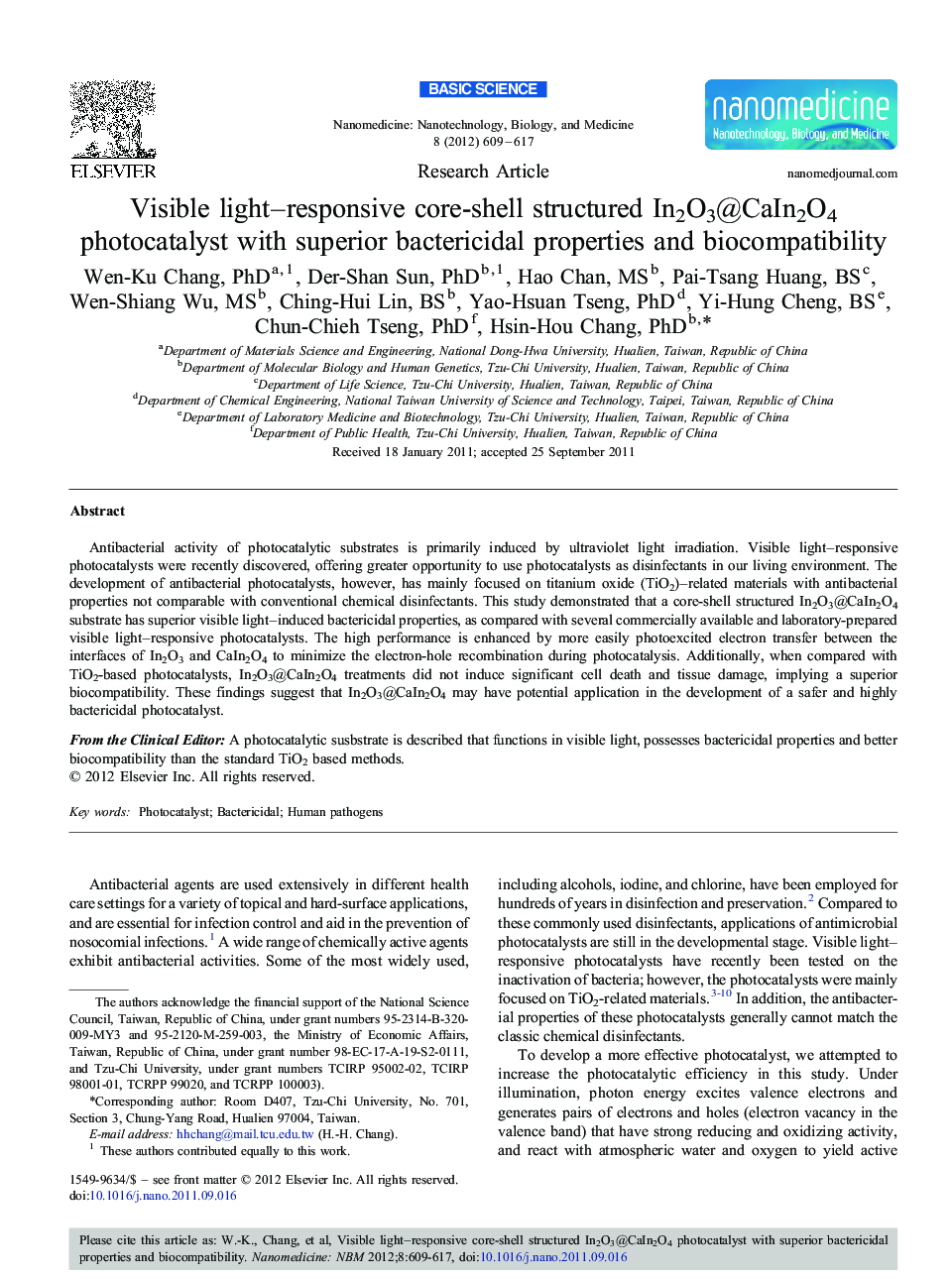| کد مقاله | کد نشریه | سال انتشار | مقاله انگلیسی | نسخه تمام متن |
|---|---|---|---|---|
| 877604 | 911036 | 2012 | 9 صفحه PDF | دانلود رایگان |

Antibacterial activity of photocatalytic substrates is primarily induced by ultraviolet light irradiation. Visible light–responsive photocatalysts were recently discovered, offering greater opportunity to use photocatalysts as disinfectants in our living environment. The development of antibacterial photocatalysts, however, has mainly focused on titanium oxide (TiO2)–related materials with antibacterial properties not comparable with conventional chemical disinfectants. This study demonstrated that a core-shell structured In2O3@CaIn2O4 substrate has superior visible light–induced bactericidal properties, as compared with several commercially available and laboratory-prepared visible light–responsive photocatalysts. The high performance is enhanced by more easily photoexcited electron transfer between the interfaces of In2O3 and CaIn2O4 to minimize the electron-hole recombination during photocatalysis. Additionally, when compared with TiO2-based photocatalysts, In2O3@CaIn2O4 treatments did not induce significant cell death and tissue damage, implying a superior biocompatibility. These findings suggest that In2O3@CaIn2O4 may have potential application in the development of a safer and highly bactericidal photocatalyst.From the Clinical EditorA photocatalytic susbstrate is described that functions in visible light, possesses bactericidal properties and better biocompatibility than the standard TiO2 based methods.
Graphical AbstractThe In2O3@CaIn2O4 nanoparticle is a visible light–responsive photocatalyst that has superior bactericidal activity as compared with several commercially available and laboratory-prepared photocatalysts. The high performance is enhanced by more easily photoexcited electron transfer between the interfaces of In2O3 and CaIn2O4 to minimize the electron-hole recombination during photocatalysis. Additionally, In2O3@CaIn2O4 exhibits a superior biocompatibility when compared with TiO2-based visible light–responsive photocatalysts and can be used in vivo. These findings suggest that In2O3@CaIn2O4 may have potential application in the development of a safer and highly bactericidal photocatalyst.Figure optionsDownload high-quality image (215 K)Download as PowerPoint slide
Journal: Nanomedicine: Nanotechnology, Biology and Medicine - Volume 8, Issue 5, July 2012, Pages 609–617